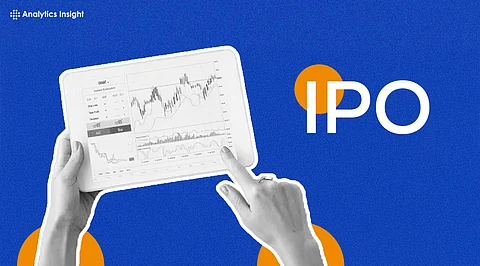

IPOs offer early investment opportunities but require careful research, not hype-driven decisions.
Use trusted platforms like SEBI, NSE, BSE, and financial news sites to track IPO updates and company details.
Read the DRHP or its summary to understand the company’s business, risks, and IPO objectives.
Initial Public Offerings or IPOs are often seen as a chance to buy shares of a company before they list on the stock market. It’s a way for businesses to raise money from regular investors. Some IPOs give really good returns and become success stories. Others don’t do so well after listing. So, blindly following the crowd isn’t a great idea. The smart thing to do is to track IPOs properly and understand what the company is offering.
Information from unverified social media accounts or forwarded messages is often unreliable. Instead, IPO tracking should begin with trusted sources such as:
The SEBI website, where official IPO documents are published
NSE and BSE websites for IPO calendars, listing dates, and price bands
Financial news platforms like Moneycontrol, CNBC-TV18, and Business Standard
These sources provide updates on company details, issue size, grey market premiums (GMP), and expert opinions, helping investors stay informed and prepared.
Every company launching an IPO has to submit a document called the Draft Red Herring Prospectus (DRHP). It has everything, what the company does, how much it earns, what risks are involved, and where the IPO money will be used. Reading the whole DRHP may be tough, but simple versions are available online. These summaries help spot whether a company has genuine potential or hidden problems.
Also Read: Bitcoin Surge: Is the Next Big Crypto IPO Just Around the Corner?
Before putting money in any IPO, it helps to know the company’s main work. Is it in a fast-growing area like electric vehicle or fintech? Does it offer a product or service that people actually use? For example, companies like Zomato became popular even though they weren’t making profits at the time of their IPO. But that didn’t work out for all companies, Paytm’s performance after its IPO was disappointing. So just being a known name isn’t enough.
Another smart move is to compare the IPO company with others already listed on the stock exchange. If a new fashion brand is asking for a higher price than known companies like Trent or Aditya Birla Fashion, but doesn’t show better results, that could be a red flag. Ratios like P/E (price-to-earnings), revenue, and profit margins help in this comparison.
Also Read: IPO Listing Time: Key Details Every Smart Investor Should Know
Big players like mutual funds and global institutions sometimes invest in IPOs as anchor investors. If such investors are showing interest, it may mean the company has good potential. But this shouldn’t be the only reason to invest because these investors can sell their shares after 30 days of listing.
The grey market premium (GMP) is the extra amount people are ready to pay for IPO shares before they get listed. It gives an idea of how the stock might perform. But GMP is just based on hype and is not always correct. For instance, even though LIC had a high GMP before its IPO, it listed below its issue price. So, GMP should only be treated as a clue, not a sure sign.
IPOs can be for short-term profit or long-term gains. Some investors buy IPOs hoping for quick listing gains. Others look at the company’s long-term growth and business model. The goal should be clear before investing. That helps avoid confusion and emotional decisions.
Just because a company gets listed doesn’t mean the job is done. Prices can fall after listing, and that can be a good time to invest, if the company’s business is strong. Tracking quarterly results, industry news, and how the company is performing helps in making better choices later.
IPOs can be exciting, but they aren’t a shortcut to getting rich. Many things need to be checked like the company’s background, financials, industry growth, and investor interest. A little research and a calm mind work better than going by rumors or online noise. That’s how investing in IPOs becomes less risky and more rewarding.
